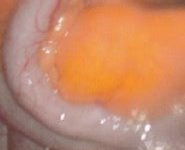|
History of Appendicitis

Appendicitis is not a disease of the last few years. The history of appendicitis and of appendectomy dates back to even medieval times. Understanding developments over the years and centuries gone on appendicitis may be important to appreciate scientific progress on this common disease.
We shall give a brief history of this disease, and then highlight the natural history of acute appendicitis in the very young, adult, the pregnant and the elderly.
Later, Dr Charles Mc Burney described in details the constellation of signs and symptoms that characterizes appendicitis, as well as map out the spot where maximum pain is felt by patients suffering from this disease – the Mc Burney’s point, which is the junction of the outer third of a line drawn from the navel to the anterior superior iliac crest (tip of the waist bone). Anders Celsius (1701–1744), described what is now believed to be a possible reference to appendicitis when he wrote of a: "distemper seated in the large intestine, particularly affecting that part where I mentioned the caecum to be, accompanied by violent inflammation and vehement pains, particularly in the right side" -The Story of Medicine Page 99 (italics ours). The father of Modern Medicine, Hippocrates of Cos also referred to as Hippokrates of Kos (460 BC – 370 BC) is credited with very factual and clear writings, in which real patients are described with their medical conditions. Even though some authorities may not agree, he gave a very vivid description of a case that sounds like the earliest recorded history of appendicitis with perforation in his writing tilted The Epidemics:
"The woman who lodged at the house of Tisamenas has a troublesome attack of iliac passion (acute abdominal pain and distension), much vomiting; could not keep her drink; pain about the hypochondria, and pain also in the lower part of the belly; not thirsty; became hot; extremities cold throughout with nausea and insomnolency; urine scanty and thin; dejections undigested, thin, scanty. Nothing could do her any good. She died" - A History of Surgery By Harold Ellis Page 22 (italics ours). The interlude between the Hippocratic times and Celsius saw great anatomist and physicians like Jacopo Berengario da Carpi(1460–1530)in Italy who described very precisely the appendix and attributed right iliac fossa pain to this organ, and Gabriele Falloppio (1523 – October 9, 1562), popularly known by his Latin name Fallopius who actually described the appendix as a worm like organ.
History of AppendectomyThe history of appendectomy dates back to 1884 when Kronlein a diagnosis of appendicitis, and performed the first operation in February of that year, but the patient died. Remarkable pioneers in the field of appendicectomy that must be noted include Sir Frederick Treves, who, by 1901, had performed over a thousand appendectomies, but lost his daughter, Hetty to appendicitis complicated by peritonitis! He is famously known to have performed appendectomy on King Edward VII two weeks before his coronation on 26 June 1902 in Buckingham Palace. In the roll call is also Abraham Groves who removed an inflamed appendix in about 1883, and this event came to light only during his 1934 autobiography. Since the history of appendicitis and appendectomy has progressed dramatically that most surgeries are now done as keyhole endoscopic surgeries. Natural History of AppendicitisAppendicitis remains common today, that it is the greatest cause of acute abdominal admissions worldwide perhaps, after gastroenteritis.
The natural history of appendicitis varies slightly in the elderly and early life, as well as during pregnancy. Recognition of this is key to accurate diagnosis and treatment of this common but potentially fatal medical condition. The classic history is that of a dull to severe right side abdominal pain that may have commenced around the umbilicus and moved over the course of 30 minutes to 24 hours to the right lower abdomen, called right iliac fossa. The pain may be accompanied by fever, nausea, and vomiting. It is important to note that the most common symptom associated with appendicitis pain is anorexia, or loss of appetite. Vomiting after the onset of pain is also classical.
Appendicitis In The YoungAppendicitis has been reported within the first 28 days of life. Such new born babies obviously can not complain of pain. They often become unwell, and may refuse their feeds, showing non-specific signs and symptoms. They may or may not run temperature. A careful examination of the newborn to rule out all other cause of illness in this age group may help to point to the appendix as the cause of trouble. Thankfully, appendicitis in newborn is extremely rare. If diagnosed, surgical operation is still the cure. Appendicitis In The Elderly
History of appendicitis in the elderly is more or less like would be expected in a young adult, but with the absence of fever on most occasions. There may be associated diarrhoea or constipation, with loss of appetite. Appendicitis In PregnancyAppendicitis and pregnancy could go together. Depending on the stage of pregnancy, the history will be the same, but the position of the pain may be higher on the right side of the abdomen than is normally expected.
The next section discusses what could cause appendicitis.
References
History of Appendicitis or Appendicectomy: Queries & Comments!Do you have a great story about, query or comment on the history of appendicitis? Share it! What Other Visitors Have SaidClick below to see contributions from other visitors to this page...
DAT. Minimally INVASIVE SURGEON Not rated yet Home AdhesionsAbdominal Aortic Aneurysm Abdominal Migraine Abdominal Pain Store Biliary Colic Braxton Hicks Carcinoid Tumour Chance Fracture Cholecystitis Constipation Crohn's Disease Donations ERCP Gastric Volvulus Gastroenteritis Gonorrhoea Heartburn Heiner Syndrome Indigestion & Heart Attack Irritable Bowel Syndrome (IBS) Menstrual Pain Messenteric Lymphadenitis Mid - Cycle Pain Non Specific Abdominal Pain Pancreatitis Pelvic Inflammatory Disease (PID) Peppermint Oil Period Pain PMS Rectus Sheet haematoma Recurrent Abdominal Pain Syndrome Trapped Wind VolvulusWhat Is Cancer
|
[?]Subscribe To This Site
|


